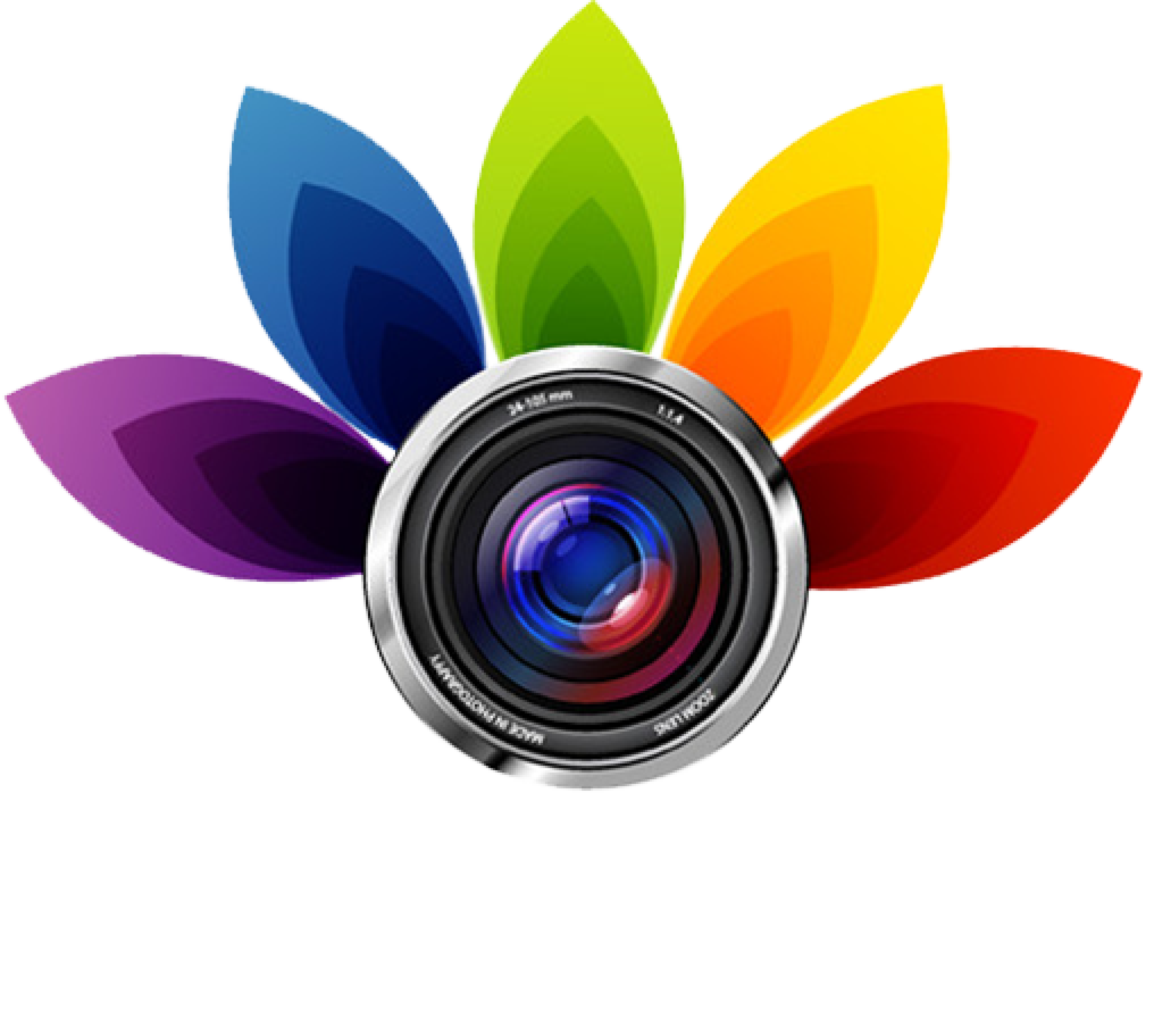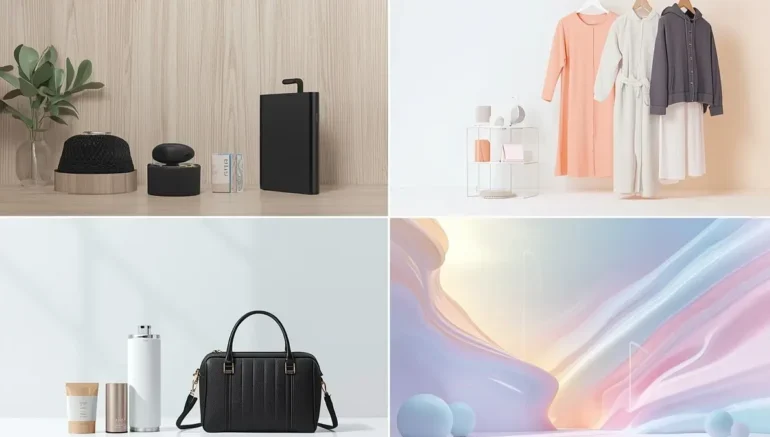
5 Different Background Styles for E-Commerce Products
When it comes to selling products online, using the right background styles can make a big difference in how your items are perceived. A great product photo not only shows the item clearly but also attracts shoppers’ attention. The background style you choose can make your product stand out, look professional, and even influence a customer’s decision to buy. On the other hand, a messy or distracting background can take attention away from the product itself. That’s why selecting the right background style is an important step in e-commerce photography.
In this article, we’ll explore five different background styles that work well for online stores. Each style has its own benefits, depending on the product type and the overall look you want to achieve. If you’re selling clothing, gadgets, or accessories, these backgrounds can help your photos look cleaner and more attractive. We’ll also share tips on how to use each style effectively. By the end, you’ll have a better idea of how to make your product images pop and encourage more people to click “buy.”
Plain White Background Styles for Clean Product Photos
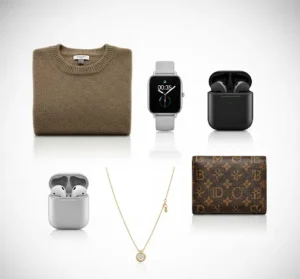 Using a plain white background is one of the most popular ways to present products clearly. It removes distractions, helping the product stand out and appear professional. White backgrounds are especially useful for e-commerce sites, catalogs, and online stores because they create a consistent and clean look across multiple images. When photographing with a white background, it’s important to control lighting properly. Soft, even lighting reduces harsh shadows and keeps the product looking natural. You can use natural light from a window or invest in soft box lights for more control.
Using a plain white background is one of the most popular ways to present products clearly. It removes distractions, helping the product stand out and appear professional. White backgrounds are especially useful for e-commerce sites, catalogs, and online stores because they create a consistent and clean look across multiple images. When photographing with a white background, it’s important to control lighting properly. Soft, even lighting reduces harsh shadows and keeps the product looking natural. You can use natural light from a window or invest in soft box lights for more control.
There are different styles you can use even with a plain white background. Some photographers place the product directly on a white surface for a simple, flat look. Others add soft shadows or reflections to create depth without taking away from the product. You can also slightly fade the edges of the background to give a gentle gradient effect.
Here are some tips to make your white background photos more effective:
- Make sure that the background is evenly lighted to avoid gray spots.
- Keep the camera level to maintain straight product lines.
- Use a tripod to avoid blurry images.
- Edit the background lightly if needed, but don’t overdo it.
Why Plain White Works for Most E-commerce Items
Plain white backgrounds work well for most e-commerce items because they keep the focus entirely on the product. They create a clean and professional look that feels consistent across a website or online store. White backgrounds also make it easier to show accurate colors and details, which helps customers make informed purchasing decisions. They are versatile, working for products of all shapes, sizes, and colors, and they allow retailers to maintain a simple and uniform presentation. Lighting and proper editing are important to make the white stays vibrant and even.
Here are some simple tips to improve white background photos:
- Make sure the product is lighted to avoid shadows or gray areas.
- Use a tripod to keep the camera steady and the image sharp.
- Keep the product centered and fill the frame appropriately.
- Edit lightly to clean up any imperfections without altering the product’s true look.
Gradient Background Styles for a Modern Look
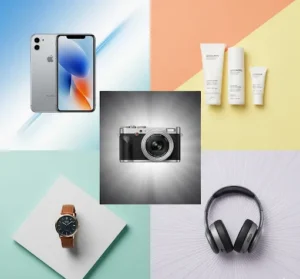 Gradient backgrounds are a popular choice for creating a modern and stylish look in product photos. Unlike plain white backgrounds, gradients add a small shift in color or tone, which can make your product stand out without overwhelming the viewer. They work well for tech products, cosmetics, fashion items, and lifestyle shots, giving a fresh and professional vibe. Choosing the right gradient is important; soft, light gradients keep the focus on the product, while bolder gradients can make a statement or match brand colors.
Gradient backgrounds are a popular choice for creating a modern and stylish look in product photos. Unlike plain white backgrounds, gradients add a small shift in color or tone, which can make your product stand out without overwhelming the viewer. They work well for tech products, cosmetics, fashion items, and lifestyle shots, giving a fresh and professional vibe. Choosing the right gradient is important; soft, light gradients keep the focus on the product, while bolder gradients can make a statement or match brand colors.
Proper lighting is key to make the gradient smooth and even across the background. There are several gradient styles you can explore to give your images a contemporary feel. Linear gradients provide a smooth transition from one side of the background to the other, while radial gradients create a soft spotlight effect behind the product. You can also experiment with diagonal gradients or gentle color blends for a creative touch.
Here are some tips to get the best results:
- Pick colors that complement your product, not distract from it.
- Keep the gradient and soft for a professional look.
- Use photo editing tools to smooth out uneven tones.
- Test different angles and lighting to improve the depth of the gradient.
Lifestyle Background Styles to Show Real Use
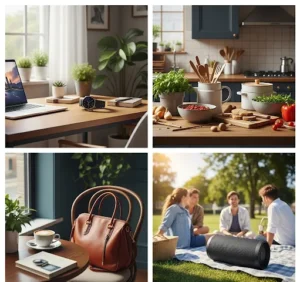 Lifestyle backgrounds are designed to show products in real-life settings, helping customers imagine how they would use them. Instead of a plain or studio background, these images feature environments like homes, offices, or outdoor spaces. This style works well for fashion, gadgets, kitchenware, and home décor, making the product feel relatable and practical. Lighting and props play a big role in creating a realistic scene. Natural light often works best, as it keeps the photo warm and inviting. Small details, like arranging items neatly or showing partial use, can make the scene feel authentic without distracting from the main product.
Lifestyle backgrounds are designed to show products in real-life settings, helping customers imagine how they would use them. Instead of a plain or studio background, these images feature environments like homes, offices, or outdoor spaces. This style works well for fashion, gadgets, kitchenware, and home décor, making the product feel relatable and practical. Lighting and props play a big role in creating a realistic scene. Natural light often works best, as it keeps the photo warm and inviting. Small details, like arranging items neatly or showing partial use, can make the scene feel authentic without distracting from the main product.
There are several ways to approach lifestyle backgrounds depending on your product and audience. You can place the product in a minimal setting to focus attention while still giving context, or create a fully styled scene for storytelling. Action shots, like someone using the product, can make images more engaging and relatable.
Here are some simple tips to improve lifestyle product photos:
- Use props that improve the product but don’t clutter the scene.
- Keep the background consistent with your brand’s style.
- Experiment with angles to show the product naturally in use.
- Edit lightly to maintain a clean and realistic look.
Patterned Background Styles for Creative Appeal
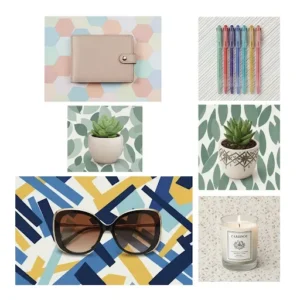 Patterned backgrounds add a creative and visually appealing touch to product photos. They can make images stand out by giving energy and personality to the shot, which is especially useful for fashion, stationery, and lifestyle products. Patterns can range from simple geometric shapes to bold textures, depending on the brand’s style and target audience. While patterns add interest, it’s important not to let them overpower the product. Soft lighting and careful placement help keep the product as the main focus. You can use physical patterned backdrops or create patterns digitally in editing software.
Patterned backgrounds add a creative and visually appealing touch to product photos. They can make images stand out by giving energy and personality to the shot, which is especially useful for fashion, stationery, and lifestyle products. Patterns can range from simple geometric shapes to bold textures, depending on the brand’s style and target audience. While patterns add interest, it’s important not to let them overpower the product. Soft lighting and careful placement help keep the product as the main focus. You can use physical patterned backdrops or create patterns digitally in editing software.
There are different approaches to using patterned backgrounds effectively. You can choose simple patterns for a minimal, modern look, or vibrant, patterns to draw attention and create a fun vibe. Matching the color palette of the pattern with your product helps maintain harmony in the image.
Here are some tips for using patterns successfully:
- Keep the pattern consistent and avoid overly busy designs.
- Make sure the product contrasts well against the background.
- Use props sparingly so the pattern remains the focus.
- Test different angles to highlight both the product and the pattern.
When Patterned Backgrounds Can Boost Sales
Patterned backgrounds can boost sales when they make a product stand out and appeal to the target audience. They add personality and style to product photos, which can catch a shopper’s eye while scrolling online. This approach works best for items like fashion accessories, home décor, stationery, and lifestyle products, where visual appeal matters as much as functionality. Patterns can also help convey a brand’s personality, if it’s playful, elegant, or modern. The key is to balance creativity with clarity so the pattern supports the product rather than distracting from it. Proper lighting and composition makes the product remains the main focus.
Here are some tips for using patterned backgrounds effectively:
- Choose patterns that complement the product’s color and style.
- Keep the pattern simple if the product is detailed or colorful.
- Avoid overly busy designs that compete with the product.
- Test different angles and distances to highlight the product naturally.
Transparent Background Styles for Flexible Display
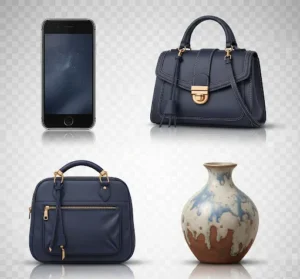 Transparent backgrounds are ideal for product photos that need flexibility across different platforms and designs. With a transparent background, the product can be placed on any color, pattern, or scene without needing extra editing. This style is commonly used for e-commerce, catalog images, and marketing materials, allowing the product to blend seamlessly into websites, social media posts, or print designs. To create a clean transparent background, careful masking and editing are important, especially around edges and fine details. Good lighting and clear contrast between the product and background during shooting make the process easier.
Transparent backgrounds are ideal for product photos that need flexibility across different platforms and designs. With a transparent background, the product can be placed on any color, pattern, or scene without needing extra editing. This style is commonly used for e-commerce, catalog images, and marketing materials, allowing the product to blend seamlessly into websites, social media posts, or print designs. To create a clean transparent background, careful masking and editing are important, especially around edges and fine details. Good lighting and clear contrast between the product and background during shooting make the process easier.
Transparent backgrounds can also be paired with shadows or reflections to maintain a realistic look without losing flexibility. PNG files are the most common format because they preserve transparency without quality loss.
Here are some tips to make high-quality and transparent product images:
- Use sharp, clean edges to avoid jagged outlines.
- Include soft shadows to give depth without adding a solid background.
- Check that small details like hair, jewelry, or textured surfaces are fully visible.
- Save files in a format that maintains transparency, like PNG.
Conclusion
Choosing the right background style can make a big difference in how your products are seen and sold online. If you go for clean white, modern gradients, relatable lifestyle scenes, creative patterns, or flexible transparent backgrounds, each style has its own way of highlighting your product. Experimenting with different approaches can help you find what works best for your brand and audience. Which background style do you usually prefer for your products, and why? Share your thoughts or experiences in the comments below, we’d love to hear what makes your product photos stand out.
Read Next: Best Cameras for E-Commerce Product Photography in 2026
